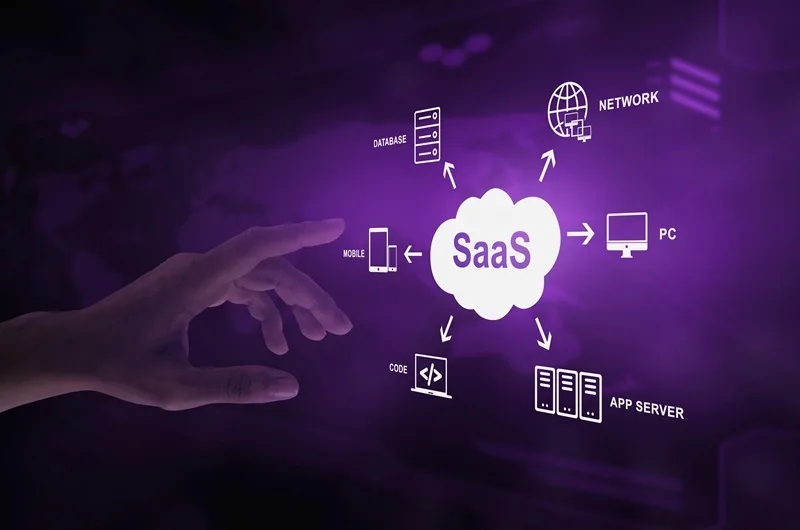Introduction
In today’s fast-paced digital landscape, software development teams are constantly seeking ways to improve their processes and deliver high-quality applications more efficiently. One approach that has gained significant traction in recent years is continuous deployment (CD). This revolutionary software development practice enables organizations to streamline their workflows, reduce development cycles, and enhance overall productivity.
What is Continuous Deployment?
Continuous deployment automatically deploys software updates to a production environment as soon as they are ready, eliminating the need for manual intervention. This contrasts with traditional software development models, which deploy software updates in larger, less frequent batches.
Benefits of Continuous Deployment
Adopting a continuous deployment strategy can bring numerous benefits to software development teams and organizations. First, by automating the deployment process, teams can deliver new features and updates to customers more quickly, allowing them to respond to market demands and stay ahead of the competition. Additionally, continuous deployment encourages a culture of frequent, incremental updates, which helps to identify and address issues earlier in the development cycle, resulting in higher-quality software. Moreover, the risk of major, disruptive software updates is reduced, as changes are introduced in smaller, more manageable increments, making it easier to identify and address any issues that arise. Furthermore, continuous deployment fosters a collaborative environment, as developers, testers, and operations teams work together to ensure a seamless and efficient delivery process. Finally, automation and streamlined workflows associated with continuous deployment can help reduce manual effort, minimize errors, and improve overall development efficiency.
Continuous Deployment vs. Traditional Software Development
Traditional software development models often involve bundling new features and updates together and deploying them in large, infrequent releases after lengthy development cycles. This approach can lead to several challenges, such as increased risk, longer feedback loops, and slower response to market changes.
In contrast, continuous deployment focuses on delivering small, incremental updates on a regular basis, typically multiple times per day. This approach allows for faster feedback, quicker bug fixes, and a more agile response to customer needs.
What is the Difference Between CI and CD?
Continuous integration (CI) and continuous deployment (CD) are related but distinct concepts in the software development lifecycle.
Continuous Integration (CI) is the practice of automatically building, testing, and integrating code changes into a shared repository, typically multiple times per day. This helps to identify and address integration issues early in the development process. Continuous Deployment (CD), on the other hand, is the next step in the process. Here, the changes that have been successfully integrated are automatically deployed to a production environment, without the need for manual intervention.
While CI and CD are often used together, it’s important to note that CD cannot be achieved without a robust CI process in place first.

Key Principles of Continuous Deployment
The successful implementation of continuous deployment is underpinned by several key principles:
- Automated Deployment: The deployment process should be fully automated, with no manual steps required to push updates to production.
- Incremental Updates: Software updates should be delivered in small, incremental changes rather than large, monolithic releases.
- Continuous Testing: Comprehensive automated testing should be integrated throughout the development lifecycle. This will ensure the quality and stability of each update.
- Monitoring and Observability: Robust monitoring and observability tools should be in place to track the performance and health of the deployed applications.
- Culture of Collaboration: Continuous deployment requires a collaborative culture where development, testing, and operations teams work together seamlessly.
Tools and Technologies for Continuous Deployment
Implementing a successful continuous deployment strategy requires the use of a range of tools and technologies, including:
- Version Control Systems: Tools like Git, which enable the management and tracking of code changes.
- Continuous Integration (CI) Tools: Examples include CircleCI, which automate the build and testing processes.
- Continuous Deployment (CD) Tools: Solutions like Azure DevOps which automate the deployment of software updates.
- Containerization and Orchestration: Technologies that enable the packaging and deployment of applications in a consistent, scalable, and reliable manner.
- Monitoring and Observability Tools: Solutions like Prometheus which provide visibility into the performance and health of deployed applications.
What is a Continuous Pipeline?
A continuous pipeline, also known as a CI/CD pipeline, is a automated workflow that encompasses the entire software development lifecycle, from code commit to deployment. The key stages of a continuous pipeline include:
- Source Code Management: The code repository where developers commit their changes.
- Continuous Integration: The automated process of building, testing, and integrating code changes.
- Artifact Management: The storage and management of the artifacts (e.g., compiled code, Docker images) produced during the build process.
- Continuous Deployment: The automated process of deploying the verified and approved artifacts to the production environment.
- Monitoring and Observability: The tools and processes that provide visibility into the performance and health of the deployed applications.
By implementing a well-designed continuous pipeline, organizations can streamline their software development and delivery processes, reduce manual effort, and ensure the timely and reliable deployment of updates to their customers.
Best Practices for Successful Continuous Deployment
To ensure the successful implementation of continuous deployment, organizations should follow several best practices. Firstly, start small and iterate. Begin with a limited scope and gradually expand the continuous deployment process as the team gains experience and confidence. Secondly, establish clear ownership and responsibilities. Clearly define the roles and responsibilities of the various teams involved, including development, testing, and operations. Additionally, automate everything. Automate as many steps in the deployment process as possible, from building and testing to provisioning infrastructure and deploying to production.
Moreover, implement comprehensive testing. Develop a robust suite of automated tests, including unit tests, integration tests, and end-to-end tests, to ensure the quality and stability of each software update. Furthermore, embrace a culture of collaboration. Foster a collaborative culture where development, testing, and operations teams work together to continuously improve the continuous deployment process. Finally, continuously monitor and improve. Regularly review the performance and effectiveness of the continuous deployment process, and make adjustments as needed to optimize the workflow.
Challenges and Considerations in Continuous Deployment
While the benefits of continuous deployment (CD) are well-documented, implementing and maintaining a successful CD process is not without its challenges. First, integrating the various tools and technologies required for CD can be technically complex. It may necessitate a significant investment in time and resources. Additionally, transitioning from a traditional software development model to a CD approach represents a significant cultural shift. It may require buy-in and collaboration from all teams involved. Moreover, ensuring the security and compliance of the CD process, especially in regulated industries, is a complex and ongoing challenge. Establishing reliable rollback and disaster recovery mechanisms is also crucial to mitigate the risks associated with frequent software updates. Finally, implementing robust monitoring and observability tools is essential to ensure the performance and stability of the deployed applications.
What is One Requirement for Achieving Continuous Deployment in SAFe?
In the context of the Scaled Agile Framework (SAFe), one key requirement for achieving continuous deployment is the adoption of a DevOps mindset and practices. This includes:
- Collaborative Culture: Fostering a collaborative culture where development, testing, and operations teams work together seamlessly. This will help to ensure the success of the continuous deployment process.
- Automated Build and Test Processes: Establishing automated build and test pipelines. This will ensure the quality and reliability of each software update.
- Continuous Integration: Integrating code changes into a shared repository multiple times per day, with automated testing to identify and address issues early.
- Automated Deployment: Implementing a fully automated deployment process to push updates to production environments without manual intervention.
- Monitoring and Observability: Implementing robust monitoring and observability tools to track the performance and health of the deployed applications.
By embracing these DevOps principles and practices, organizations can achieve the level of automation, collaboration, and visibility required for successful continuous deployment within the SAFe framework.
Continuous Deployment in Agile Software Development
Continuous deployment (CD) naturally fits within the Agile software development methodology. It aligns with Agile principles of iterative development and frequent feedback. In an Agile environment, CD enables teams to deliver value faster by automating the deployment process. This allows them to quickly and frequently deliver new features and updates to customers. This approach helps reduce risks, as smaller, incremental updates are less risky than large, infrequent releases. It makes it easier to identify and address any issues that arise. Additionally, CD fosters a collaborative culture where development, testing, and operations teams work together to ensure successful software delivery. Moreover, robust monitoring and observability tools enhance visibility into the performance and health of deployed applications, enabling teams to make informed decisions and continuously improve the process. By integrating continuous deployment into an Agile software development workflow, organizations can achieve a more streamlined and efficient development cycle.
Conclusion
Continuous deployment is a transformative software development practice that enables organizations to streamline their workflows, reduce development cycles, and enhance overall productivity. By embracing the principles of continuous deployment, teams can deliver new features and updates to customers more quickly, improve the quality of their software, and foster a collaborative, agile culture.
If you’re interested in learning more, consider reading out article about GitHub Tags vs Releases – A Comprehensive Comparison.









Leave a Reply